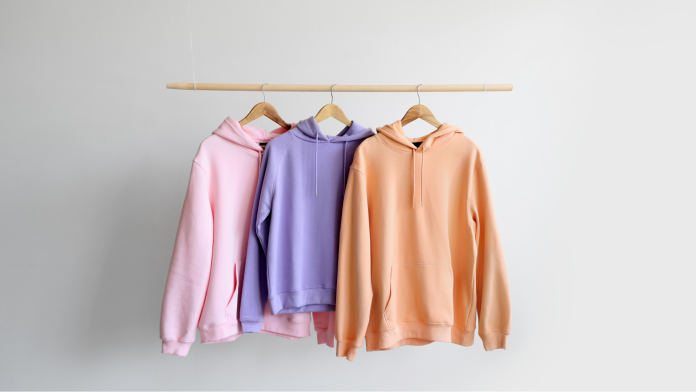The wholesale clothes hoodie market is a thriving and profitable sector within the garment business. Minimum order quantities (MOQs), pricing strategies, and fabric selections are critical success elements for businesses wishing to join or grow in this sector.
The Effects of Fabric Selections on Hoodies for Wholesale Clothing
The fabric used in wholesale clothing hoodies has a big influence on how comfortable, durable, and appealing they are overall. Popular material cotton is soft and breathable, making it appropriate for both casual and athletic use. A critical aspect of customer happiness is its absorbency, which aids in body temperature regulation. Another popular choice is fleece, which is perfect for colder areas because it is warm and has moisture-wicking qualities. Its stain resistance increases its allure for daily usage. Water resistance is a feature that makes nylon a good option for outdoor or wet circumstances, especially for enterprises catering to specialized markets. Businesses need to know each fabric’s characteristics and how well it fits into various target markets to put together a profitable line of wholesale hoodies.
In addition to the main materials, firms have to think about fabric mixtures. For example, combining fleece with spandex may offer stretch and flexibility, while blending cotton with polyester can improve durability and wrinkle resistance. Businesses may accommodate a wide range of client preferences by customizing the hoodie’s performance, drape, and overall feel via the selection of fabric mix. It is noteworthy that decisions in fabrics may affect production costs and, in turn, pricing strategies. Businesses must balance market demand, cost-effectiveness, and quality when choosing textiles for their wholesale clothes hoodies.
Wholesale Clothing Hoodies – Minimum Order Quantities (MOQs)
Minimum order quantities (MOQs) are important in the wholesale hoodie apparel industry. MOQs are often imposed by suppliers to guarantee economical and efficient manufacturing. Financial planning and inventory management for firms depend on knowledge and navigation of MOQs. Although larger MOQs might result in bulk reductions, they often need more storage and tie up more money. Lower MOQs provide greater flexibility, but the cost per unit may increase.
When negotiating MOQs with suppliers, businesses must carefully consider their target market, sales forecasts, and financial capacity. Achieving a balance between maintaining competitive pricing and steering clear of overstocking is essential. Lower MOQs might be advantageous for companies developing new ideas or entering the wholesale clothes hoodie industry. By doing this, they can measure the market’s reaction without having to commit to big orders. Businesses may use their sales volume to negotiate better conditions and decrease MOQs in the future as they expand and establish themselves.
Creating Profitable Price Plans for Wholesale Clothing Hoodies
A key element of success in the wholesale clothing hoodies business is pricing tactics. Companies must establish pricing that is profitable, competitive, and consistent with their brand strategy. Pricing selections are influenced by a number of variables, including the cost of the fabric, manufacturing costs, handling and shipping charges, and targeted profit margins. To determine prospective prospects for differentiation and comprehend the current pricing points for comparable wholesale clothing hoodies, it is vital to carry out comprehensive market research.
Worth-based pricing lets companies charge more for distinctive features or higher-quality sweatshirts by taking into account the consumers’ perception of the hoodies’ worth. In order to draw in price-conscious clients, competitive pricing entails establishing prices that are comparable to or somewhat less than those of rivals. The target market, brand image, and overall company objectives should all be reflected in the price plan that is selected.
Conclusion
Businesses should also take into account how seasonality, trends, and promotions affect price in addition to these fundamental elements. Sales may be increased by offering discounts or special offers for large orders or during off-seasons. To be competitive and react to changing market conditions, pricing plans must be reviewed and modified on a frequent basis. Through careful consideration of fabric selections, minimum order quantities, and pricing tactics, enterprises may establish a competitive edge in the wholesale clothing hoodies industry.







